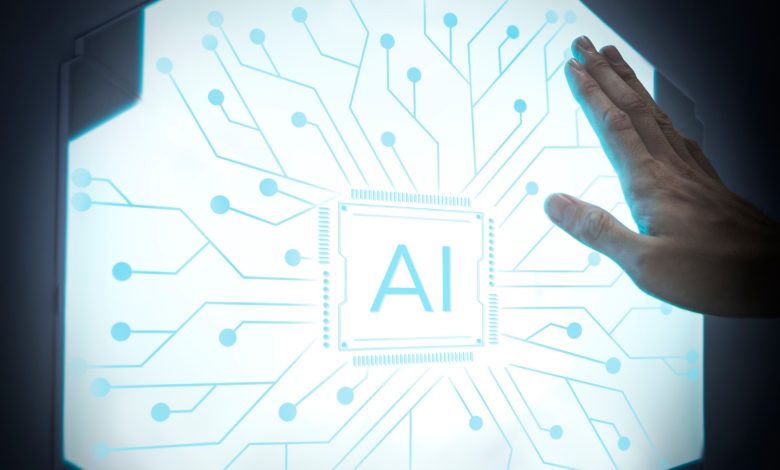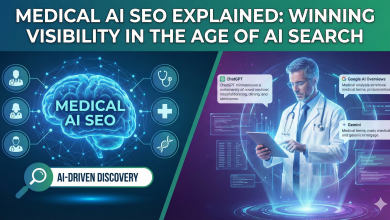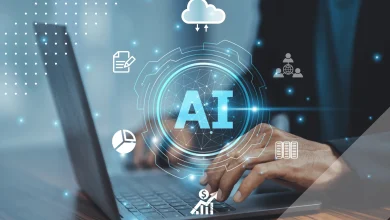
Artificial Intelligence (AI) is no longer an experimental tool reserved for tech giants — it’s now the growth engine driving businesses across every sector.
From predicting customer needs before they arise to personalizing every interaction, AI is turning ordinary organizations into data-smart growth machines.
And the numbers prove it. According to PwC, AI is projected to add $15.7 trillion to the global economy by 2030, primarily by improving productivity and customer experiences.
Businesses that adopt AI are not only becoming more efficient — they’re also building stronger, more loyal customer bases.
This article explores how AI wins more customers and supercharges business growth, with data-backed insights, real-world examples, and actionable takeaways.
1. Personalization at Scale: Turning Data into Delight
Why It Matters
Customers today don’t just want to be served — they want to be seen.
Research by McKinsey reveals that companies leading in personalization generate 40% more revenue from those activities than their peers. The challenge used to be scalability — how do you personalize experiences for millions?
That’s where AI excels.
How It Works
AI systems analyse every interaction — searches, clicks, purchases, and even pauses in browsing — to map customer intent. Using this data, AI can craft dynamic experiences that feel tailor-made.
Real-World Examples
- Amazon’s Recommendation Engine drives around 35% of total sales. Every time you see “Customers who bought this also bought…,” it’s AI predicting what you might want next.
- Netflix uses AI not just to recommend what to watch, but to decide which original shows to produce. Its algorithms forecast viewer preferences based on genre, completion rates, and even thumbnail engagement.
Key Takeaway
AI doesn’t just personalize marketing — it personalizes value. When a business anticipates customer needs, satisfaction and retention follow naturally.
2. Predictive Power: Knowing What Customers Want Before They Do
From Reactive to Proactive
Before AI, businesses often reacted to trends after they happened. Now, AI allows them to act before the market shifts.
Predictive analytics models can forecast buying behaviors, churn risks, and even product preferences using historical and real-time data.
Case Studies
- Starbucks’ “Deep Brew” Platform integrates AI with loyalty data to suggest drinks and offers personalized to each customer’s taste, time of visit, and weather.
- Sephora uses AI-driven insights to predict customer purchase intent, optimizing marketing spends and increasing customer lifetime value.
What It Means
Prediction is the new persuasion. When companies can foresee what customers need, they can offer it proactively — turning foresight into loyalty and engagement.
3. Efficiency Redefined: Doing More with Data, Not Guesswork
Productivity through Automation
AI reduces friction in everyday business operations. Tasks that once consumed hours — data entry, lead qualification, customer segmentation — can now be done in seconds with remarkable accuracy.
Data Point
According to Accenture, AI could increase business productivity by up to 40% and allow employees to focus on creative, strategic tasks rather than repetitive ones.
Examples
- HubSpot’s AI tools help marketing teams identify high-quality leads automatically, scoring prospects based on behavior and engagement data.
- H&M employs AI to forecast demand at each retail location, optimizing stock distribution and reducing waste by 20%.
Key Takeaway
AI doesn’t just make teams faster — it makes them smarter. It frees human potential for innovation while machines handle the mechanics.
4. Smarter Customer Support: Instant Help, Human Feel
AI in Customer Experience
Speed is now a key factor in customer satisfaction. A Harvard Business Review study found that customers expect replies within 5 minutes of inquiry. AI-driven chatbots and virtual assistants are making this possible, 24/7.
Real-World Leaders
- Bank of America’s “Erica” has handled over 1 billion customer interactions, offering financial insights, spending alerts, and real-time support.
- Zappos, long known for customer-first service, uses AI to route complex queries to the most qualified human agents, improving both efficiency and empathy.
Result
AI augments human customer service rather than replacing it. The result is faster resolution, fewer errors, and a seamless blend of automation and human warmth.
5. Marketing Intelligence: Smarter Campaigns, Sharper Conversions
From Generic Ads to Hyper-Targeted Campaigns
AI transforms marketing from guesswork to precision. By analyzing customer data, browsing behavior, and even sentiment, AI can segment audiences and tailor campaigns to micro-intentions.
Examples
- Coca-Cola uses AI to analyze social media data and identify flavor trends, which directly inform new product launches.
- Google Ads’ Smart Bidding employs AI to automatically optimize bids in real time — improving conversions while reducing costs.
Impact
Marketers leveraging AI report an average 30–50% improvement in ROI from campaigns. AI isn’t replacing creativity — it’s empowering it with precision.
6. The Data Flywheel: AI’s Compounding Advantage
How It Works
AI thrives on data — and the more it learns, the better it performs.
Businesses that implement AI early gain a compounding advantage: more data leads to better insights, which lead to better decisions, which attract more customers — who generate even more data.
This is the data flywheel effect that powers companies like Amazon, Google, and TikTok.
Example
TikTok’s recommendation algorithm continually learns from every scroll and pause, refining content suggestions at breathtaking speed. This data feedback loop is why its engagement rates far outpace competitors.
Key Insight
AI-driven growth is exponential, not linear. Once a business activates this loop, it becomes self-sustaining — a true competitive moat.
7. Real-World Impact Across Sectors
| Industry | AI Use Case | Result |
| Retail | Personalized recommendations, dynamic pricing | 30% higher customer retention |
| Finance | Fraud detection, automated advisory | 50% fewer false positives |
| Healthcare | AI-assisted diagnostics, virtual triage | 25–40% reduction in wait times |
| Real Estate | Property valuation & buyer matching | 2x faster deal closures |
| E-commerce | Chatbots & product discovery AI | 35% increase in conversion rate |
These aren’t projections — they’re outcomes already being realized by AI-powered organizations.
8. Future Trends: Where AI and Customer Growth Converge
The AI revolution is still accelerating. Here are a few emerging trends shaping the next wave of business-customer relationships:
- Generative AI in Content Marketing: Tools like ChatGPT and Jasper are helping marketers create personalized content at scale, cutting content development time by 60–70%.
- Voice Commerce: With AI voice assistants like Alexa and Google Assistant, consumers are starting to shop through voice commands — a market expected to exceed $40 billion by 2032.
- AI-Powered Branding: Startups and creators are using AI tools to generate brand names, slogans, and domain strategies — turning creativity into data-driven decision-making.
- Emotion AI: Advanced systems can now interpret tone and emotion, allowing businesses to respond not just to what customers say, but to how they feel.
Each trend reflects a deeper truth — AI is shifting business from being product-centric to being experience-centric.
9. Human + Machine: The True Power of AI
There’s a growing misconception that AI will replace human creativity. In reality, it enhances it.
The most successful companies in the coming decade will be those that blend human insight with machine intelligence — where data supports empathy and automation frees people to innovate.
AI doesn’t take away the human element — it amplifies it.
The goal isn’t to make businesses robotic, but to make them responsive, resilient, and relevant.
10. From Insight to Action: Supercharging Your Business with AI
If your organization hasn’t yet leveraged AI, now is the moment to start. The entry barriers are lower than ever — from plug-and-play automation tools to accessible APIs and AI-powered CRM systems.
Here’s how to begin:
- Start Small: Identify one area (like marketing or support) where AI can make measurable impact.
- Use Existing Data: You already have valuable data — AI can turn it into insights.
- Adopt AI Tools, Not Overheads: Cloud-based platforms like Salesforce Einstein, ChatGPT Enterprise, or HubSpot AI can be implemented quickly.
- Train Teams: Human adaptability will determine how well AI performs in your organization.
Businesses that act now will shape the next generation of customer experience — while those that wait risk falling behind in a rapidly intelligent marketplace.
Final Thought
AI’s greatest strength isn’t automation — it’s amplification.
It amplifies your understanding of customers, your ability to personalize, and your capacity to grow.
In an age where attention is scarce and loyalty is fleeting, AI gives businesses the edge to stay relevant, responsive, and remarkably human.
Because ultimately, AI doesn’t replace intelligence — it multiplies it.



